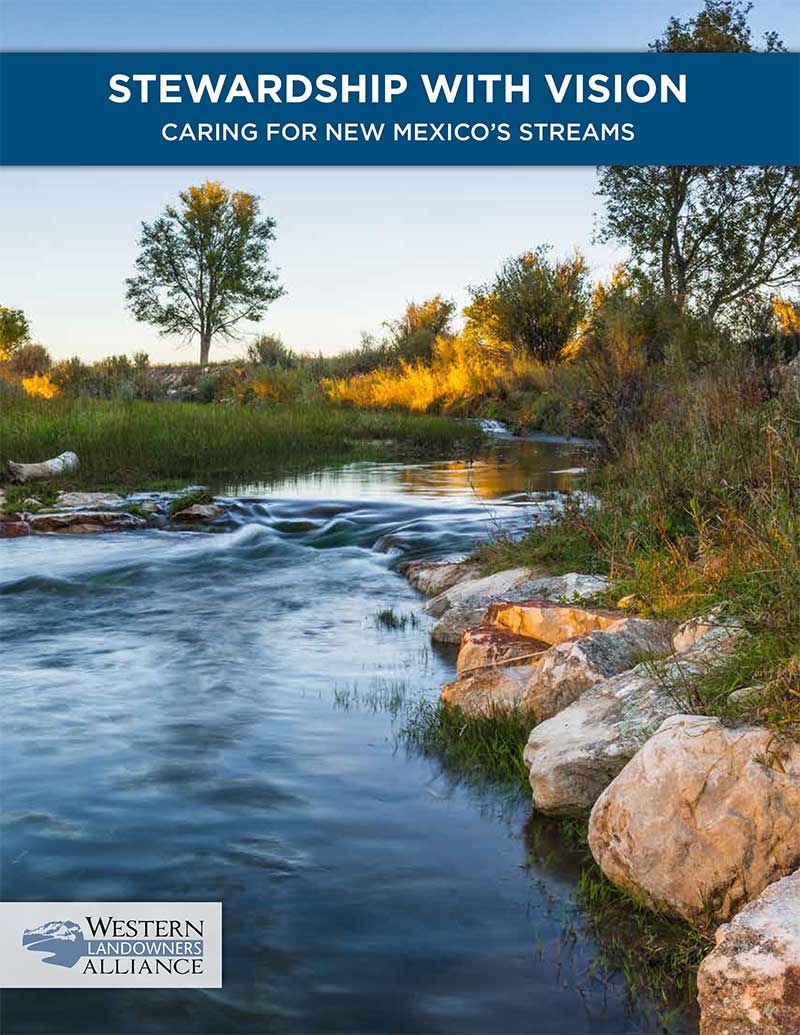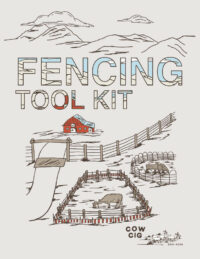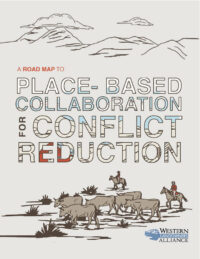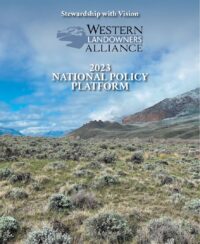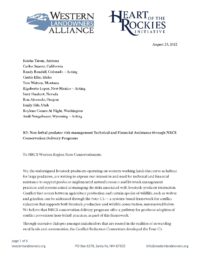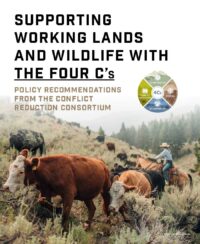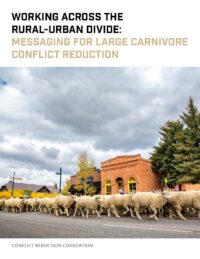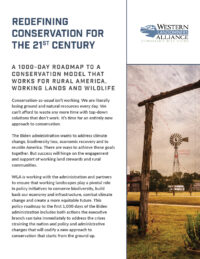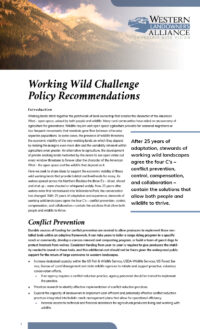Wildlife
| Arizona, Colorado, conflict reduction, Idaho, Montana, New Mexico, Oregon, range riding, Working Wild Challenge, Wyoming
Range Riding Producer Tool Kit
Range riding is a long-used and flexible practice, making it a beneficial conflict reduction tool for use in diverse, ever-changing western landscapes. The overarching goal of range riding for predator…
| conflict reduction, grizzly bears, Wolves, Working Wild Challenge
Electric Fencing Producer Tool Kit
Fencing, turbo fladry and electric drive over mats are tools that can be used to deter conflict through exclusion of large carnivores and/or containment of livestock. These temporary, semi-permanent or…
| conflict prevention, conflict reduction, grizzly bears, Wolves, Working Wild Challenge
Carcass Management Producer Tool Kit
Across the West, carcass management is increasingly recognized as an important part of systems-based livestock and predator conflict prevention efforts and for its role in increasing human safety on the…
| conflict reduction, grizzly bears, Wolves, Working Wild Challenge
A road map to place-based collaboration for conflict reduction
Place-based collaborative groups offer a means to coordinate community-scale action to address wildlife-livestock conflicts, and processes to lift landowner and livestock producer needs, while finding areas of agreement and shared…
| Policy
2023 National Policy Platform
As landowners and land managers, we recognize that well-managed working lands are the cornerstones of both human communities and the ecosystems on which we all depend. We know what it…
Letter to NRCS Re: Non-lethal predator risk management
In this letter signed by hundreds of producers from around the West, we ask USDA’s Natural Resources Conservation Service staff to consider “technical and financial assistance to support producer-implemented natural…
| Working Wild Challenge
Supporting Working Lands and Wildlife with the Four C’s
Policy Recommendations from the Conflict Reduction Consortium Across the western US, iconic wildlife like elk, deer, grizzly bears, and wolves share lands with humans and their livestock. This comes with…
Working across the rural-urban divide: Messaging for large carnivore conflict reduction
Conflicts between large carnivores and livestock can be polarizing. The words used around large carnivore-livestock conflict reduction can either further polarize a sensitive situation or bring people together in a…
Redefining Conservation for the 21st Century
Our roadmap to a conservation model that works for rural America, working lands and wildlife. Conservation as usual isn’t working. We are literally losing ground and natural resources every day.…
| Policy, Working Wild Challenge
Working Wild Challenge Policy Recommendations
Working lands stitch together the patchwork of land ownership that creates the character of the American West – open space, valued by both people and wildlife. Many rural communities have…
Featured Publication
Stewardship with Vision: Caring for New Mexico’s Streams.
Private stewardship of Western land and water plays a vital role in the health of the West. This must-read guide highlights the importance of New Mexico landowners to our economic and environmental future. Our food, water resources, forests, rangelands, and fish and wildlife populations depend on their stewardship. Public policies that support and encourage the voluntary stewardship of our shared resources benefit us all.
